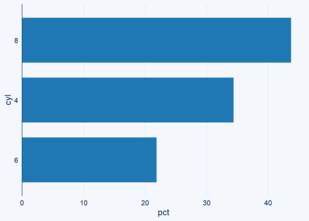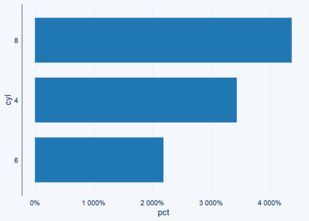Edited, memorised or added to reading queue
on 01-Feb-2023 (Wed)
Do you want BuboFlash to help you learning these things? Click here to log in or create user.
| status | not read | reprioritisations | ||
|---|---|---|---|---|
| last reprioritisation on | suggested re-reading day | |||
| started reading on | finished reading on |
| status | not read | reprioritisations | ||
|---|---|---|---|---|
| last reprioritisation on | suggested re-reading day | |||
| started reading on | finished reading on |
Parent (intermediate) annotation
Open itAs we have shown, it also accurately predicts periods of elevated transaction activity and captures other forms of purchase dynamics that can be leveraged in simulations of future sequences of customer transactions. We highlight our model’s flexibility and performance on two groups of valuable customers: those who keep making more and more transactions with the firm (denoted as ”opportunity” custom
Original toplevel document (pdf)
cannot see any pdfsFlashcard 7560777829644
| status | not learned | measured difficulty | 37% [default] | last interval [days] | |||
|---|---|---|---|---|---|---|---|
| repetition number in this series | 0 | memorised on | scheduled repetition | ||||
| scheduled repetition interval | last repetition or drill |
Parent (intermediate) annotation
Open itThe two calendar components – the month and week indicators – represent time-varying contextual information which is shared across the individuals within a given cohort. In addition, in this example, we include also an individual time-invariant covariate (gender) and a
Original toplevel document (pdf)
cannot see any pdfs| status | not read | reprioritisations | ||
|---|---|---|---|---|
| last reprioritisation on | suggested re-reading day | |||
| started reading on | finished reading on |
Parent (intermediate) annotation
Open ital-level covariates are strictly optional – in our empirical study, the Base model is built without any such variables. Whenever individual covariates are included, we label the model Extended. <span>Note that the model is completely agnostic about further extensions: all individual-level, cohort-level, time-varying, or time-invariant covariates are simply encoded as categorical input variables, and are handled equally by the model. This property makes our model extremely flexible in dealing with diverse customer behaviors observed across multiple contexts and platforms <span>
Original toplevel document (pdf)
cannot see any pdfsFlashcard 7560782548236
| status | not learned | measured difficulty | 37% [default] | last interval [days] | |||
|---|---|---|---|---|---|---|---|
| repetition number in this series | 0 | memorised on | scheduled repetition | ||||
| scheduled repetition interval | last repetition or drill |
Open it
library(ggcharts) (p <- bar_chart(cyl, cyl, pct)) Copy Next, let’s try to change the axis labels to include a percentage sign using the ... p + scale_y_continuous(labels = scales::percent) Copy
Flashcard 7560785431820
| status | not learned | measured difficulty | 37% [default] | last interval [days] | |||
|---|---|---|---|---|---|---|---|
| repetition number in this series | 0 | memorised on | scheduled repetition | ||||
| scheduled repetition interval | last repetition or drill |
Parent (intermediate) annotation
Open itIf the number of input and output time steps vary, then an Encoder-Decoder architecture can be used. The input time steps are mapped to a fixed sized internal representation of the sequence, then this vector is used as input to producing each time step in the
Original toplevel document (pdf)
cannot see any pdfsFlashcard 7560788053260
| status | not learned | measured difficulty | 37% [default] | last interval [days] | |||
|---|---|---|---|---|---|---|---|
| repetition number in this series | 0 | memorised on | scheduled repetition | ||||
| scheduled repetition interval | last repetition or drill |
Parent (intermediate) annotation
Open itIn machine learning, a feature refers to a variable that describes some aspect of individual data objects (Dong & Liu, 2018).

